Presentation
Patient in the late postoperative for bariatric surgery (7 years), developed sudden small bowel obstruction.
Patient Data

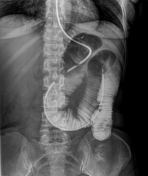

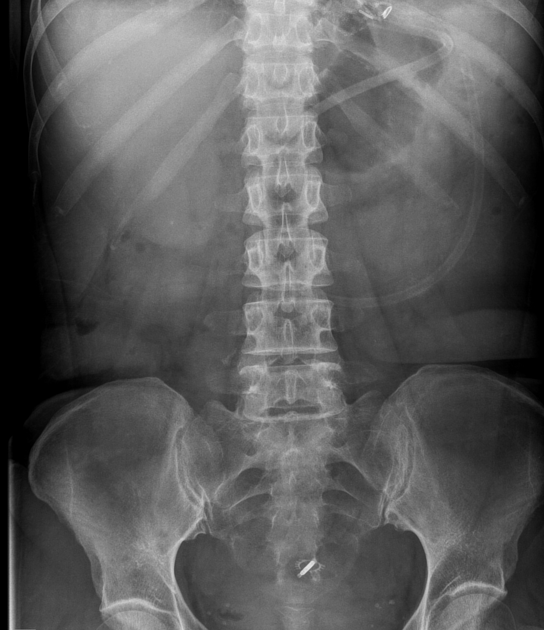
Upper gastrointestinal (UGI) series with images obtained at shows dilated loops of proximal small bowel (>3 cm).
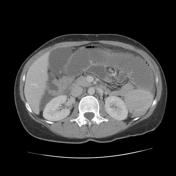



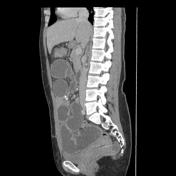

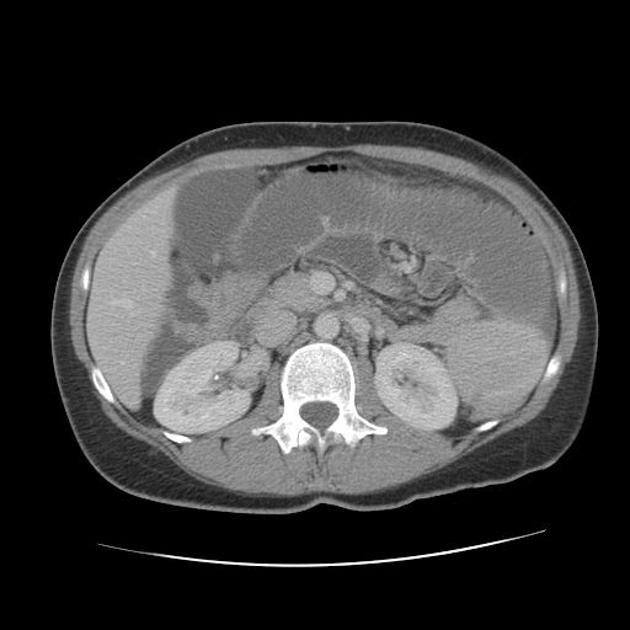
The patient underwent bariatric surgery with anterocolic-anterogastric transposition of the Roux loop.
It's possible to observe the distension of the proximal jejunum, fluid content, stacking coins sign, until the portion in mesogastric abdomen, where there is narrowing and abrupt return to normal caliber, coinciding with the point of latero-lateral anastomosis of bariatric surgery.
Case Discussion
Small bowel obstruction are more frequent after laparoscopic gastric bypass than after open procedures. Most obstructions after laparoscopic Roux-en-Y gastric bypass are secondary to internal hernias, with fewer obstructions from post-operative adhesions or other causes.
Small bowel obstruction may occur anywhere and produce varied radiographic appearances.
Roux limb obstructions may be secondary to adhesions, strictures, kinking, internal hernias, or occasionally bezoars or intussusceptions. Patients with Roux limb obstructions typically present with nausea and vomiting, and radiologic evidence of obstruction may be detected at UGI examination or CT.




 Unable to process the form. Check for errors and try again.
Unable to process the form. Check for errors and try again.